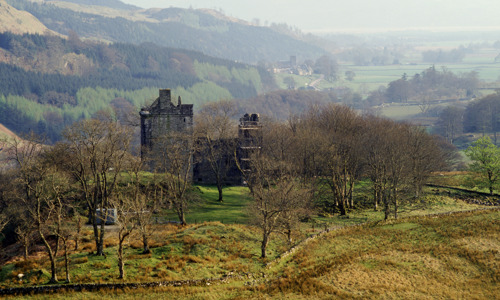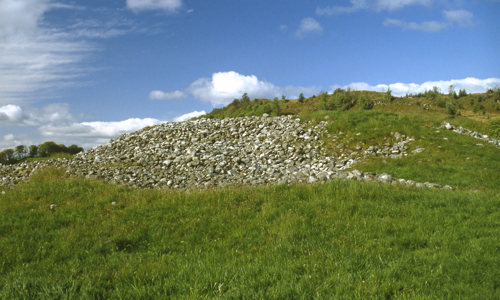History
Dunstaffnage Castle is one of Scotland’s oldest stone castles. This mass of masonry guards the seaward approach from the Firth of Lorn to the Pass of Brander – and thereby the heart of Scotland. It still overawes visitors today.
The castle was built before 1240, probably by Duncan MacDougall, son of Dubhgall, Lord of Lorn, and grandson of the great Somerled, the self-styled ‘King of the Isles’. These were stirring times in Argyll, because of the struggle between the Kingdom of Scotland and Norway for control of the Hebrides.
The King of Scots won control of the region in 1266, but Dunstaffnage continued to see plenty of action during the Wars of Independence (1296–1356). Robert the Bruce famously besieged the mighty fortress around 1308, after his victory over the MacDougalls at the Pass of Brander.
Dunstaffnage remained a royal castle until it passed to the Campbell earls of Argyll in the 1460s. From then until the last Jacobite Rising in 1745–6, Dunstaffnage’s story is inextricably interlinked with the constant struggles by the Crown and the Campbells to control their unruly western subjects.
Home of the MacDougall chief
In 1164, Somerled was killed fighting the Scots. His eldest son, Dubhgall, became the next ‘King of the Isles’. Judging by the architecture, Dunstaffnage was built by Dubhgall’s son, Duncan, sometime before his death in 1240. (Dubhgall had founded the priory at Ardchattan, just 6 miles east of Dunstaffnage.)
The new stronghold had a daunting curtain wall of stone, behind which lay the residential and service buildings. The defensive wall had few openings, just some narrow vertical arrow slits.
Duncan’s son Ewen probably added the three projecting round towers, to show his power and improve the castle’s defences. One of the towers later became part of a gatehouse, but the other two remain much as they were built.
A prison for a heroine
Late in 1746, Dunstaffnage welcomed one of its more famous guests, Flora MacDonald.
This gentle-mannered woman was visiting her brother in South Uist when she met Bonnie Prince Charlie, then fleeing from the Redcoats following his April defeat at Culloden. Flora agreed to help him get away, and dressed him up as her serving girl, ‘Betty Burke’.
The pair crossed to Skye, from where the prince made his escape. But Flora was arrested and brought to Dunstaffnage. She remained there just a few days, before being moved to the Tower of London. She was released the following year.
Natural history
The castle and the surrounding broadleaved woodland are home to pipistrelle bats, a rare species in the west of Scotland.













